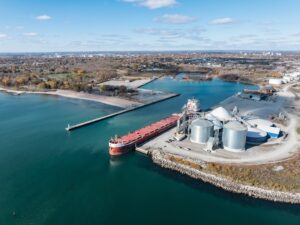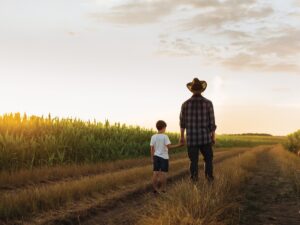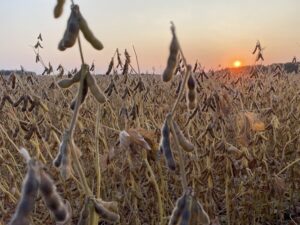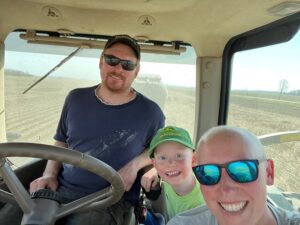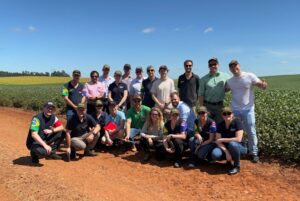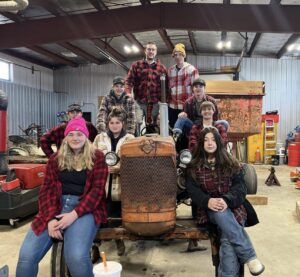The problem solvers: Yajun Peng
IMPROVING AGRICULTURE SUSTAINABILITY IN THE FUTURE

YOU MIGHT SAY PROBLEM-SOLVING COMES NATURALLY TO YAJUN PENG, who is pursuing her doctorate at the University of Guelph Ridgetown Campus under the supervision of Dr. Laura Van Eerd. “Ms. Peng is an exceptionally talented scientist who is excelling in her PhD studies largely due to her problem-solving abilities,” Van Eerd explains. “This takes both creativity and intellect. Her research continues to enhance our understanding of the mechanisms by which carbon and nitrogen are stored in soil and cycled to grain crops. This has provincial and global significance.”
For Peng, the drive to tease apart these mechanisms comes from her steadfast desire for everyone to have healthy food every day. But she adds that “when it comes to ‘healthy’ food, in my view, it is not only about nutrients for human beings, but also about the way that we create food that is healthy for the air, water, flowers, and animals. In my opinion, to achieve this goal, the first step is to have healthy soil by building up soil organic matter to strengthen its resilience to climate change.”
Long-term cover cropping is a key way to achieve the build-up of organic matter, but how this affects nitrogen management has yet to be fully discovered. “The main question of my research is ‘Does soil organic matter accrual increase nitrogen availability to grain corn, and if it does, why?’” Peng explains. “To answer this question, we use the nitrogen-15 tracer technique. This technique allows us to trace the labelled fertilizer nitrogen in the soil-plant system, especially to investigate the contribution of labelled fertilizer nitrogen and soil nitrogen to grain corn.”
Another part of this research that Peng considers “amazing” is that she is able to compare this in long-term cover cropping versus first-time versus none in the same field, removing potentially confounding experimental factors of growing conditions, soil type, and more. “With this experimental set-up, we have the opportunity to provide farmers with scientific evidence that even one year of cover cropping is better than zero.”
But while it is quite clear from cover crop trials in these scenarios build up soil organic matter and replenish nutrient levels (especially increasing nitrogen availability as well as minimizing its loss), just how carbon and nitrogen are released from cover crops is not yet well understood. It is particularly important also to see if there are differences in release across different soil types and agroecosystems. Peng’s next step is, therefore, to investigate how soil texture with different soil organic matter content affects cover crop decomposition, using an incubation experiment with nitrogen-15 labelled cover crops. In the end, she should be able to make good conclusions about how much synchrony exists between cover crop nitrogen release and crop nitrogen demand across soil types.
In the long term, she sees her future research focusing on how the agricultural community can increase agricultural productivity without depleting soil and water resources to meet the food needs of growing populations. “I believe adoption of best management practices in agroecosystems is a realistic and cost-effective approach to improving agricultural sustainability and protecting natural resources,” she says. “So, my long-term goal is to investigate why best management practices can increase crop yields and soil health as well as protect the environment, based on on-farm and long-term research experiments.”
In Peng’s view, sustainable food production is very much all about the soil. “I think of soil as just like the heart in human beings,” she says. “It must be protected and improved, and that, of course, requires everyone in the agriculture community working together. We scientists can’t do it alone.” •





